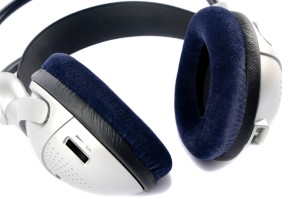Editor’s note: BenArnold is executive director, industry analyst with The NPD Group, a Port Washington, N.Y., research firm. This is an edited version of a post that originally appeared here under the title, “Hearables take headphones well beyond music.”
 In the past, consumers had pretty simple requirements when buying headphones – the sound needed to be good but not great. We dealt with wires, clunky designs and foam covered ear cups as we listened to music at home or on the go. Today’s buying criteria are much different. Shoppers place a larger emphasis on sound quality, mobility and of course design. Headphones have become more specialized, aligned with different listening occasions like travel, gym and office use. In fact, many consumers own multiple pairs – 2.1 on average, according to NPD’s Headphone Ownership and Applicationstudy. Features like Bluetooth, in-line mics, volume controls and moisture resistant materials have come to the forefront, adding convenience as well as a new element to the user experience. All of these factors have contributed to continued growth in the headphone market, which, according to our group tracking service, grew 7 percent (units) in 12 months, ending in February.
In the past, consumers had pretty simple requirements when buying headphones – the sound needed to be good but not great. We dealt with wires, clunky designs and foam covered ear cups as we listened to music at home or on the go. Today’s buying criteria are much different. Shoppers place a larger emphasis on sound quality, mobility and of course design. Headphones have become more specialized, aligned with different listening occasions like travel, gym and office use. In fact, many consumers own multiple pairs – 2.1 on average, according to NPD’s Headphone Ownership and Applicationstudy. Features like Bluetooth, in-line mics, volume controls and moisture resistant materials have come to the forefront, adding convenience as well as a new element to the user experience. All of these factors have contributed to continued growth in the headphone market, which, according to our group tracking service, grew 7 percent (units) in 12 months, ending in February.
But just as new features are making headphone use more convenient, a new crop of products are looking to add another dimension to personal listening. Enter the hearable. While not a great term in my opinion (it doesn’t really describe anything) hearables, similar to wearables, are technology for your ears. Music listening is a component of the experience but not the entirety of it. The idea revolves around adding features to personal listening devices like headphones that can change what’s being heard, provide audible data or feedback of some sort, or result in a biological response from the user.
Don’t we just want headphones that will reliably play “What does the fox say?” when we queue up the song on Spotify? Sure we do. But just as sensors, apps and constant Internet connectivity have transformed the way we use mobile phones, the same could occur in audio listening devices. One of the best examples is Doppler Labs’ Here wireless ear buds. Described as an active listening system, Here’s ear buds have microphones built-in allowing the wearer to alter the sound of their surroundings. A companion smartphone app offers settings that control what is heard through the ear buds, giving the user the ability to tune out a crying baby on a cross-country flight or turn up the low talker at dinner. Here doesn’t currently play music stored on a smartphone but it can alter how live music is heard, allowing for control of elements like bass, reverb and flange. To test Here I recently used a preset in the app to make the acoustics of live music in a concert hall sound like that of Carnegie Hall.
Here’s main use case is unique among the early field of hearable devices but other products are looking to use their positioning on and around the ears to add unique features as well. Sony’s Smart B Trainer headphones add a personal trainer to workouts providing real-time audible feedback and encouragement in addition to tracking runs and selecting a playlist based on the user’s active heart rate. The Bragi Dash, like Here, is a wireless ear bud that tracks and provides feedback on workouts in addition to playing music via a 4GB built-in hard drive built-in. And rumors continue to swirl around new wireless headphone products that will streamline access to popular personal assistant apps like Google Now and Siri, aiming to make it easier to execute Web queries and other commands on-the-go without pulling out a phone.
Aside from new offerings, companies have also begun studying the biological response to audio stimuli through technology. Last fall, Skullcandy announced the Human Potential Lab, an initiative aimed at understanding how audio input impacts the body’s physiology and psychology. An effort like this has obvious applications for athletes but could also benefit the everyday headphone user. For instance, NPD’s research shows a third of owners wear their headphones at the office and 41 percent listen to headphones while traveling. Could a better understanding of how the body responds to different types of audio make an office worker more productive or a skittish flier calm on a plane?
New features and technologies are changing the way consumers use headphones, providing growth to this mature product category. Buyers are still looking for great sound and sleek designs, but developments in the hearables space have helped demonstrate that headphones are capable of even more. New sensors, Bluetooth capabilities, Wi-Fi connectivity and companion smartphone apps are helping to create a more versatile future for the category – one that will become even more important as other personal technology products like drones and virtual reality demonstrate the need for unique audio experiences. The term hearables may not ultimately endure but it’s clear headphones are quickly becoming a launching pad for innovation.
